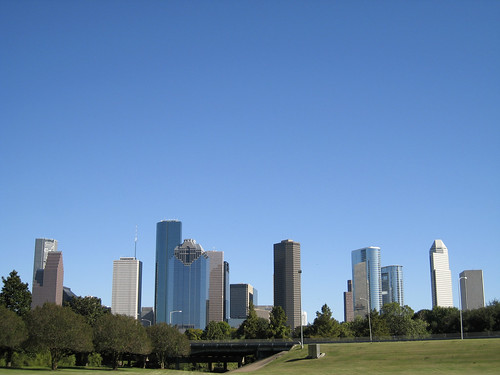David Byrne’s piece in the Wall Street Journal is a great little write-up on what it takes to make the perfect city.
Scale is important. In London people hang out in Soho, Covent Garden, Mayfair and other areas of mostly low buildings packed closely together. The City (their financial district), like the downtown in many American cities, is full of tall offices and it empties out at night. It isn’t that bustling in the daytime either. Some sort of compromise might be more ideal—the tall towers mixed in with the modest-sized shops and restaurants.
Scale is a big problem in Houston. Downtown is a mass of tall buildings with very few people living within it, then there are warehouses, some that are still active, others that have been turned into apartments. From then on it is houses and apartment buildings until one hits the Medical Center or the Galleria, both of which are mini Metropolises with tall buildings, shops, and housing. Then it’s the suburbs, each with the same strip center as the other.
The reason it is so spread out is because we have the acreage, so builders build. The other part is probably the weather. During the summer, southeast Texas is not the most comfortable area to take a stroll, so my guess is people have become comfortable driving further distances. We wouldn’t walk even if it was close, so why make it close? Density seems to be a dirty word associated with no greenery, space, or personal identity. So we continue to move outward from downtown Houston, extending our commute and then complaining about it.

